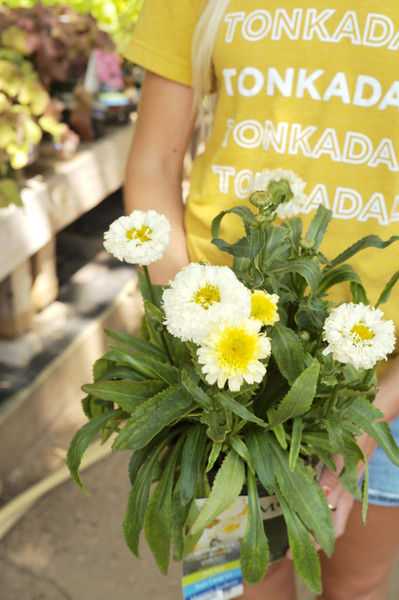Leucanthemum
Posted by Aaron Barton on Mar 4th 2023
Leucanthemum (Shasta Daisy)
With hot summer days and an abundance of sunshine, gardens are in peak season form, exploding with the vibrant blooms of exciting new plants alongside standout garden staples such as the Shasta daisy, Leucanthemum x superbum (lew-KANTH-ih-mum suh-PER-bum). Named for the snow-covered peaks of California’s Mount Shasta, the Shasta daisy is a beloved hybrid developed near Mount Shasta by Luther Burbank in the 1890s, created by first crossing European oxeye daisy, L. vulgare, with Pyrenees or Max Chrysanthemum, L. maximum. The resulting hybrid was then crossed with Portuguese field daisy, L. lacustre, and then finally with Japanese field daisy, Nipponanthemum nipponicum, to create the Shasta daisy hybrid we know and love today with over 70 unique cultivars.
Belonging to the Aster family, Asteraceae, Shasta daisy is right at home in cottage gardens, wildflower gardens, pollinator gardens, and sunny borders, especially impactful in mass plantings or used as fresh cut flowers. Blooming from mid-summer into fall, plants emerge in the spring from underground rhizomes, spreading slowly to create lush deer and rabbit resistant mounds of succulent, coarsely toothed, lance-like green foliage maturing to 18-48” tall and 18-24” wide depending on variety. Blooms rise above the foliage in compound heads consisting of rows of concentric yellow disc flowers blooming from the outside in, encompassed by snow white ray flowers (petals) to complete their cheery, yellow-eyed white flowers, a flower structure unique to members of Asteraceae, collectively called a capitula.
For a classic Shasta daisy appearance, ‘Becky’ is a longstanding favorite, featuring large blooms up to four inches across on rigid stems growing upwards of 48” tall, excellent for cut flower applications or taller sunny backdrops. For a mid-sized option, ‘Alaska’ provides blooms up to three inches across atop rigid stems of about 36” tall. More modern cultivars can also provide a new spin on the classics, including the buttery yellow blooms of the compact ‘Western Star Gemini’ which fade to a lovely ivory white, as well as the truly unique feathery white double blooms of ‘Coconut.’
Somewhat drought tolerant when established, plant Leucanthemum in full sun areas with moist, well-drained soils and trim spent blooms to promote reblooming.
Happy planting!

